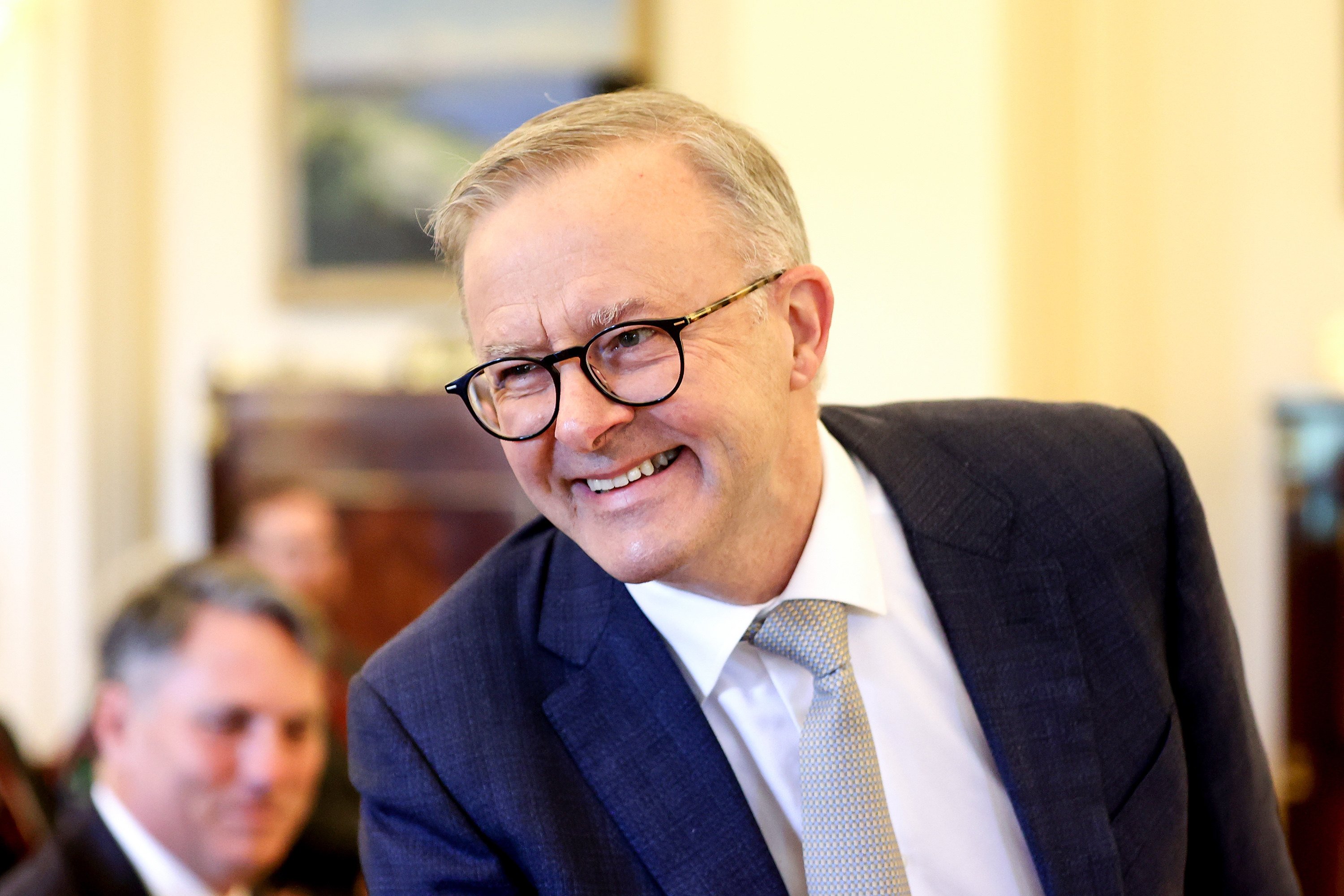Labor has now secured 77 seats, which means Anthony Albanese will govern with a majority in the 47th parliament. The new prime minister advised his caucus colleagues on Tuesday not to waste a day of government, and it’s fair to say the new Albanese administration is opening at a clip.
On Tuesday evening, Albanese appointed his first cabinet and outer ministry. Here are some things we learned.
Were there any surprises?
More than I thought there would be. It had been anticipated for some time that Labor’s deputy leader, Richard Marles, would take the defense portfolio in government. Still less expected was Tanya Plibersek moving from education to environment, Clare O’Neil stepping into the home affairs portfolio, and Tasmanian Julie Collins picking up housing and homelessness.
I would have expected Jason Clare, Labor’s campaign spokesperson, to implement the housing policy he worked up in opposition, but Clare ended up with education. Albanese wanted to promote the Queensland leftwing senator Murray Watt, but he’s vaulted straight into the cabinet as agriculture minister.
It’s also strange in government machinery since early childhood is now situated in the outer ministry, given that cheaper childcare was central to Labor’s campaign narrative. I’m surprised to see the Victorian rightwinger Tim Watts, formerly the shadow assistant minister for communications and cybersecurity, now in a foreign affairs role, given he has deep policy expertise in communications.
Who is in, and who is out?
Three women have gone from the backbench to the new outer ministry: Anne Aly, a leftwinger from Western Australia, and two rightwingers – Annika Wells from Queensland and Kirsty McBain from New South Wales.
There was a kerfuffle behind the scenes as the factions settled their nominations for cabinet and the ministry because the right section was in danger of not complying with Labor’s affirmative action rules.
To ensure the right faction remained affirmative action-compliant, Wells replaced the Queensland rightwinger Shayne Neumann (who had responsibility for veterans’ affairs) on the new front bench. Aly has been given early childhood education, Wells aged care and sport, and McBain regional development. Persisting with women, there are now 10 in a 23-person cabinet, which is a record.

What does the ministry tell us about the power dynamics of the new government?
Albanese has kept his praetorian guard in the central engine room of the government – Marles in defense, Penny Wong in foreign affairs, Katy Gallagher in finance, Jim Chalmers in Treasury, Mark Butler in health, and Tony Burke as leader of the lower house, and in the workplace relations portfolio (where Albanese wants to try to establish some Accord-style consensus between unions and employers). Longtime friend and factional ally Linda Burney will spearhead the constitutionally enshrined voice to parliament in Indigenous affairs.
Having developed the climate policy that helped neutralize a politically toxic issue for Labor in the 2022 campaign, the NSW rightwinger Chris Bowen will implement the agenda he worked up in opposition in the climate and energy portfolio. The new prime minister preserved former Labor leader Bill Shorten in the portfolio he wanted, disability, even though the two men are not close.
Albanese has two loyal lieutenants in the outer ministry – leftwingers Pat Conroy (working with Wong on the Pacific) and Andrew Giles managing immigration (with fellow Victorian Clare O’Neil in home affairs), and the leftwing senator Tim Ayers as assistant minister for trade and manufacturing.
A few points of interest
Ahead of Tuesday’s ministerial appointments, there had been a push from Western Australians for greater frontbench representation, given the west delivered four lower house seats to Labor’s column in 2022. The west appears well represented in this ministerial lineup, including the appointment of Patrick Gorman as the assistant minister to the prime minister.
Andrew Leigh, an economics professor, is always at risk of dropping off the front bench because he is not a faction member. But Albanese has kept him as an assistant treasury minister responsible for competition policy and charities in recognition of his considerable expertise.
The South Australian rightwing veteran Don Farrell has also climbed up the ministerial batting order; now he’s Labor’s deputy Senate leader. Farrell keeps the portfolio of special minister of state, which he held in opposition, and adds trade and tourism to the mix. Kristina Keneally served in that role before moving to the lower house.
What now?
The first Albanese cabinet and ministry will be sworn in at the government house on Wednesday morning, and the subcommittees of the new cabinet will meet for the first time on Thursday.
Albanese hdy already completedversea as a trip to Tokyo last week, and he will depart Australia again at the weekend to visit Indonesia.
Albanese will nominate Sue Lines, a Western Australian senator, as the new Senate president when the 47th parliament meets for the first time in the last week of July. It’s unclear whether the new Speaker of the House of Representatives will draw from within Labor’s ranks (Queenslander Milton Dick and Victorian Rob Mitchell are said to be interested in the role) or from the crossbench. The Tasmanian veteran independent Andrew Wilkie has expressed interest in taking the Speaker’s chair.











